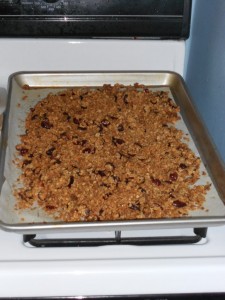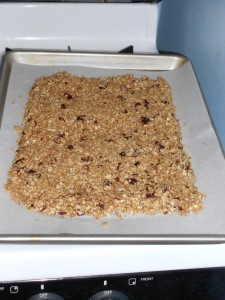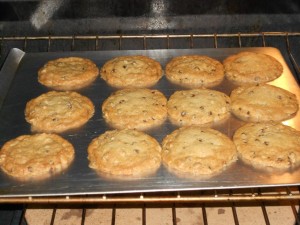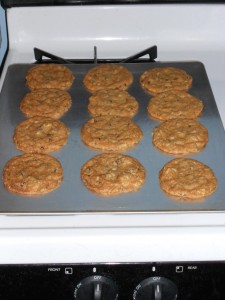First a confession—I made this meal last Saturday (was too tired last Friday) and then didn’t get around to writing it up . . . better late than never.
Lent has had me craving fish fillets, so I looked for some recipes and found a couple that looked like they might work. One required GF breadcrumbs, which I was all out of (will try this one next time) . . . the other was a rice-flour-based batter which I adapted to be dairy-free as well. I put some clean oil in my Fry Daddy and put together a GF Fish Fry.
Menu
- Long Grain Brown Rice (I use the method described here for fluffy, light, not chewy, brown rice)
- Spicy Black Beans (I use the beans from this recipe for Black & White Burritos)
- Catfish Nuggets (recipe below)
- Broccoli Slaw (recipe below)
- Guacamole (recipe below)
Menu Note: Due to my CFS (which greatly limits my ability to cook for a long time and/or do more than one thing at a time), I prepared everything except the catfish nuggets earlier in the day. The slaw & guacamole need to chill. The beans and rice can be reheated while you are cooking the fish.
Catfish Nuggets
Ingredients
- 1 pound catfish nuggets (or other white fish like tilapia; catfish nuggets come already chopped up and are cheaper than buying a fillet and cutting it up yourself)
- 1-1/4 cup rice flour (or other GF blend), divided
- 1-1/2 tsp chili powder, divided
- 1 egg
- 1/2 cup soy milk (or other dairy-free “milk”)
- salt & pepper
- oil for frying
Directions
- Preheat oven to 200°F (for keeping the nuggets warm after they are fried)
- Combine 1/2 cup of the flour and 1 tsp chili powder in a shallow dish for dredging.
- In a separate bowl, mix together the egg, the remaining 3/4 cup flour, soy milk, salt & pepper, and 1/2 tsp chili powder. Add extra “milk” if the batter is too thick.
- Heat oil (I’m guessing the Fry Daddy heats the oil to somewhere between 350°F & 400°F, but the beauty of the Fry Daddy is it keeps the oil at an even heat . . . the original recipe tells how to do this in a fry pan instead)
- Dredge 3-4 nuggets in the seasoned flour, then run through the batter and carefully place the nuggets in the hot oil. Stir gently to make sure the nuggets don’t get stuck together. Cook for 6-8 minutes or until golden.
- Remove nuggets from oil with a slotted spoon and place on a paper-towel-covered plate. Sprinkle with kosher salt and place in a warm oven to keep warm as you fry the remaining nuggets.
NOTES
- If I made this recipe again, I would try it without the dredging step. I’m pretty sure the batter would stick without it and it made the coating too thick. Another option would be to make the batter thinner.
- If you are frying on the stove or using a different type of fryer it would be wise to “test fry” a single nugget to see what the optimum frying time is for your setup.
- If you have access to decent GF tortillas you can turn the above into delicious Fish Tacos. Warm a tortilla, top with rice, beans, a couple of nuggets, some slaw & a spoonful of guacamole. Fold & Enjoy! (I prefer just piling everything on a plate or in a bowl.)
Broccoli Slaw
Mix together:
- 10 oz bag of cole or broccoli slaw mix
- 1/3 cup GF mayo
- 1 Tbls white vinegar
- 1 tsp sugar
- salt & pepper to taste
Chill at least one hour, stirring occasionally.
Guacamole
- 1 avocado, diced
- 1/4 medium red onion, diced
- 2 T cilantro, minced
- 1 large spoon diced tomatoes (fresh or saved from beans recipe)
- 1 T lemon &/or lime juice
Mix together and chill.
© 2012, Highly Sensitive Girl




























